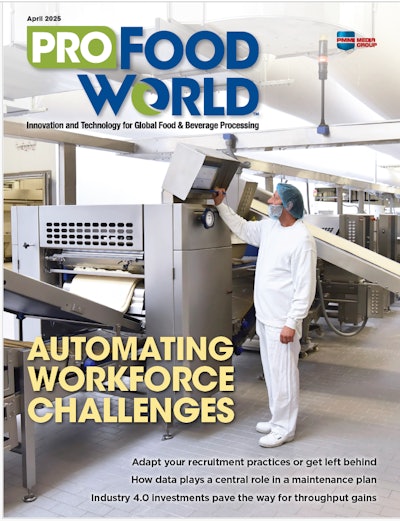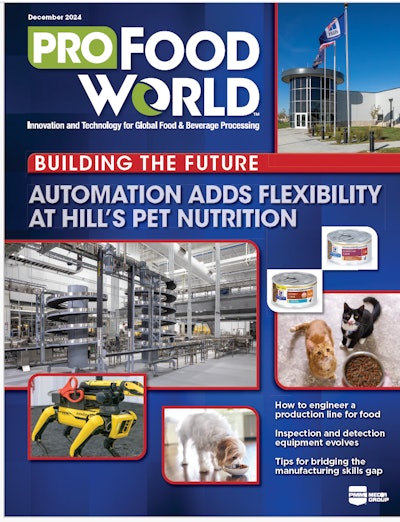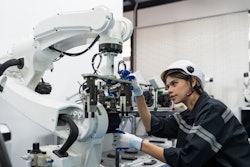Dan Sileo, chief coach of manufacturing at the FSO Institute and 25-year food and beverage industry veteran, sees time as one of the biggest obstacles for implementing and maintaining a continuous improvement (CI) program. Oftentimes, management is so busy working on the business aspects of manufacturing that it has a hard time freeing up staff to concentrate on CI. Staff reductions and lack of employee skills are also challenges, he states. “With the current low unemployment rate, you don’t want people leaving for an extra 25 cents an hour. You want them sticking around because this is a good place to work, they are engaged and able to use their discretionary effort and ideas,” he says.
After a hurricane caused major destruction in Texas a few years ago, H-E-B employees figured out how to get to the plant, what they needed to run, and ensure they got the raw materials in to get bread out to the community. In this instance, employee engagement was palpable.
Many food and beverage manufacturing leaders look to new technology and automation to improve efficiency, but it takes a village to maintain it. Sileo gives the example of when he was implementing automated guided vehicles (AGV) in a previous role he held at a beverage manufacturing plant. At the time, AGVs were fairly new technology. “It was great. It freed people up, but the amount of effort and training and then optimizing the system was a challenge and a time crunch,” he states. “We had to go back into a highly complex system of machines and software to be able to say, ‘How do we make the improvements to get loads out faster? How do we maximize density of our storage based upon our product configurations and our customers?’”
Sileo believes it takes employee engagement to make automation work as well as it could. “Some companies spend hundreds of millions for high-performance work programs. But, if you don’t have people who are engaged to run it, it really struggles,” he states.
The OpX Leadership Network, convened by PMMI, The Association for Packaging and Processing Technologies, created an employee engagement model that helps get staff engaged to the point where the discretionary effort they’re putting in goes up dramatically.
The OpX Leadership Workforce Engagement model is one of the tools Sileo uses with his clients to drive continuous improvement.
He also believes that plant leadership is essential for any CI program. Going beyond standard work on the shop floor, the FSO Institute also implements leadership standard work. CI success is also about leadership’s daily and weekly standard work, so that staff knows what to expect of their leaders.
Sean Fathman, manager of manufacturing engineering for Hixson, also sees leadership buy-in as critical for CI success. “It’s having that top-down, direct vision [that drives] continuous improvement through the manufacturing facility,” he states. “A big part of that is driving the culture through the operations team, and also developing training programs that are sustainable and can keep a CI effort moving forward.”
Diane Wolf, key accounts executive for Competitive Capabilities International (CCI), says one of the biggest challenges for continuous improvement is organizational stability. “Because continuous improvement is a journey, you need management, leadership and senior management-based support,” she states. With the frequency rate of mergers and acquisitions and leadership changes, CI can be very difficult to maintain.
“When you engage in a continuous improvement journey, you’re talking about several years. Even though you will see an impact within the first year, you must have stability, you must have leadership engaged and supporting you with a budget and resources,” Wolf states.
Fathman concurs. “Some companies will start a continuous improvement program and want immediate results, but they need to be in it for the long haul,” he says.
Do what makes sense with the right tools
Tools are great if you know how to use them, and they’re awful if you don’t, says Sileo: “Where lean manufacturing gets out of whack is when people want to use automation in place of CI.” If companies don’t engage staff members, all the automation in the world is not going to help.
Sileo has seen instances where office staff writes standard operating procedures that are almost incomprehensible to plant floor operators. “If the folks on the floor help build it, they will write what makes sense to them,” he says.
Many plants ban cell phones on the plant floor because of the potential distraction or hazards of glass breaking. Yet, Sileo says, there is glass all over the plant floor with human machine interfaces, tables and television screens.
Mitch Vanover, manager of automation at Hixson, helps clients determine the return on investment for CI projects. Food and beverage manufacturers want better data and to drill down to an individual line or piece of equipment.
“Almost every plant has a dashboard, and they can see their production numbers right away,” Vanover says. “They can go to a screen and see which piece of equipment has caused the most problems. This is driving the maintenance workforce to say, ‘Hey, we’ve been down this much on this piece of equipment. We need to go get that fixed.’”
The nice thing is, according to Vanover, operators can make a change just by looking at the screens, and then management can also make a change by looking at what’s causing the problems and possibly replace equipment that’s causing problems.
Vanover and Fathman also see increasing use of RFID technology on the plant floor as a tool to help boost efficiency. Operators are now using employee badges embedded with RFID technology to make machinery adjustments. “You can do things like determine when something happened and who was logged in,” says Vanover. “You can actually see who pushed the button and if they pushed the wrong button.”
Fathman expects the next big thing for CI will be in virtual reality or artificial intelligence (see related story, “Use artificial intelligence to make production more seamless”) built into the equipment by the OEMs. “I think technology is going to be driven very rapidly from the OEM side of the business,” he says. “For example, you’re going to have alarms for temperatures on bearings that will alert you prior to a failure of a bearing.”
Eventually, most companies understand that they can’t cost reduce themselves to greatness, says CCI’s Wolf: “You can do productivity projects, you can do capital improvements. You could do lots of things, but, ultimately, everybody gets to the point to say, ‘I understand that continuous improvement is fundamental to improving my operation.’”
According to Wolf, successful CI starts with determining where are you, developing a strategy for where you want to be, and identifying your pain points. If you’re a plant manager, and your operations aren’t as effective as you’d like them to be, CI tools can be deployed at a plant level without a full corporate program, she adds. But, generally speaking, most companies deploy CI throughout the enterprise over multiple years.
Food and beverage processors working with CCI start with an assessment process. “It’s very much like the Gardner assessment process that has a maturity scale of one to five,” says Wolf. “We ask questions in 12 key areas of manufacturing to understand where a company is. Do they have a proactive or preventive maintenance program? Do they have visual management and [key performance indicators]? Does your plant know how it’s running? Does it know what the targets are and where they are supposed to be?”
Wolf agrees there is a cultural as well as an employee engagement piece to achieve successful CI. But she emphasizes that performance metrics and communication are key. Plants must know what they are measuring and how they share what they measure from the plant floor up to the plant manager and even higher.
Wolf says plants must understand their structure and who is accountable. She offers the following guidelines:
•Do we have a process to manage our metrics, respond to these metrics and actually act on those metrics?
•Do we have employee engagement? Do employees know what is expected of them and how they are doing?
•Do people on the floor understand how to run their product lines, when to call a supervisor and when to call maintenance?
•When things go wrong, is there a plan in place to correct and document the correction?
•Does plant management understand its roles? Is there standard work that they do daily, weekly and monthly focused on improvement?
“If you can find a way to have an integrated process or an integrated umbrella for continuous improvement, you have the best chance of sustaining it,” Wolf states. Lots of companies implement programs such as visual management, asset care, 5S and focused improvement, but CI won’t be sustainable if it is not integrated. Plant employees need to know that continuous improvement helps them do their jobs better and is not just the next CI program of the month.
“The critical piece I see is that you need an umbrella that’s big enough for all the CI activities to fit within, so you really can improve and sustain,” Wolf explains.
CCI’s TRACC is an integrative improvement software and service solution for end-to-end value chain that includes the assessment and the assessment questions. It provides guidance, training, and planning tools and consultation as needed to begin the journey. “It’s developed to be self-driven, ultimately to add best practices and support the journey. The customer develops the skills to sustain it themselves,” says Wolf.
When visiting plants, Wolf always asks what data they are collecting and if the data on the bulletin board is out of date: “If all data is in different offices, in different computers, my alarm bells immediately go off because that says to me that no one is really ‘action-ing’ this data.
“If you ask a plant floor operator who has the weight control information right by his or her screen, ‘What do you do if you start rejecting a lot of packages for underweight or overweight?’ or ‘What do you do if you’re outside of this little picture graph on your screen showing your mean and your standard deviation that shows you the high and low set points?’ and they say, ‘I don’t know,’ they’re not reacting to the data that they collect,” Wolf says. “Then you know there’s an opportunity.”
When Wolf was a young engineer and a novice plant manager, a very wise person once told her, “If you fix the quality and you fix the safety, your plant performance will follow.” With her engineering background, she wasn’t quite sure what to make of that statement and was sure manufacturing equipment and processes were causing the problems.
“It was continuous improvement and employee engagement that were key. But as an engineer, I didn’t believe it. I thought I had to focus on the equipment, but it was the processes and the people, and focusing on what we needed to do to improve that drove our plant’s success.”
Employee engagement and unwavering leadership support is essential for CI success. If they both focus on the right things and corrective actions and engaging the people, big improvements are possible.
To read more about how employee engagement and leadership collaboration at SugarCreek is helping drive the continuous improvement process, click here.






















